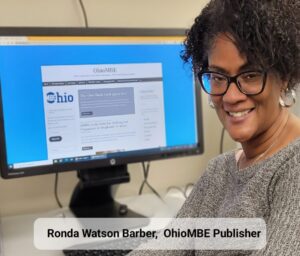By Ronda Watson Barber
OhioMBE Publisher
Columbus City Schools is a predominately Black district. The students are overwhelmingly Black. The families supporting the district through taxes are largely Black. The School Board President is Black. The Superintendent is Black. The Chief Operating Officer is Black.
On paper, this should mean progress. Yet the spending numbers tell another story.
According to the district’s own Capital Improvement report on summer construction spending, of the $80.9 million spent:
- Caucasian LEDE vendors received $17.9 million (22.2%)
- African American LEDE vendors received just $4.6 million (5.7%)
The district boasts about achieving a “30 percent LEDE spend.” But when you break it down, most of those dollars went to white-owned LEDE firms. Black-owned LEDE businesses—the very group the program was created to protect—continue to be marginalized.
The LEDE program is supposed to be race neutral. But neutrality without accountability leads to inequity. When outcomes consistently exclude Black businesses, race neutrality becomes a shield for maintaining the status quo.
This is taxation without participation. Black residents are funding the district, but Black LEDE vendors are locked out of meaningful opportunities. If Black leadership at the top doesn’t translate into equity in contracts, then what good is representation?
And so we must ask the hard questions:
- What outreach is being done to ensure Black LEDE vendors know about these projects?
- Why isn’t the LEDE vendor list even posted online?
- How are general contractors supposed to access the LEDE list?
- Where is the LEDE list?
- What good-faith efforts are being practiced when the process for notifying Black LEDE vendors clearly isn’t working?
Yet, despite these numbers, district leaders presented the report as an accomplishment. The Capital Improvements Director once referred to Columbus as a “city of poverty” while speaking before Black residents. The Superintendent, meanwhile, celebrated the overall “30 percent LEDE spend,” without acknowledging that the vast majority of that money went to white-owned firms and that Black-owned businesses remain almost completely shut out.
With sentiments and priorities like these, is it any surprise the district’s spend with Black LEDE vendors remains so low? Where is the leadership and priority towards including Black and local businesses into the purchasing and procurement arena?
And what can Black vendors do, when our issues go unanswered?
The Black folks in charge obviously don’t care about the plight of Black vendors within the district. It is interesting how quickly the administration responds to white parents who complain about school closures or how it demonstrates overwhelming support for LGBTQ students and families—yet remains silent when it comes to reinvesting in the Black community.
Leadership should not be symbolic. It should be transformative. Black vendors are asking why—with a Black School Board President, a Black Superintendent, and a Black COO—they are still denied access to the table.
Until Columbus City Schools’ spending reflects the community it serves, promises of equity and inclusion will remain empty. Our dollars deserve to circulate back into our community. Taxation without participation cannot continue to be the standard.
just my thoughts…rwb
Discover more from OhioMBE
Subscribe to get the latest posts sent to your email.
